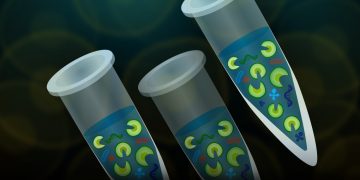
Protein Thermal Shift Assays Made Easy with
Bio-Rad’s Family of CFX Real-Time PCR Detection Systems
Protein thermal shift assays enable quick and easy buffer optimization for increased protein stability. See how Bio-Rad’s family of CFX Real-Time PCR Detection Systems can measure protein thermal stability with higher throughput and more buffer systems than traditional circular dichroism detection.

Do More with Less: Five Steps to Great Results Using One-Step Multiplex RT-qPCR
One-step multiplex RT-qPCR is a technique used to rapidly quantify multiple targets directly from RNA in a single reaction. But proper optimization and validation is essential for its success. These five tips will have you designing primers and probes, selecting reporters, and validating and optimizing your experiments like a pro.

Sensitive Codetection of Viral-Pathogen RNA and DNA
Using One-Step Multiplex RT-qPCR
RT-qPCR is a well-established method for the detection, quantification, and typing of different microbial agents. However, when dealing with the challenges of pathogen detection, not all RT-qPCR reagents are created equal. See how we used a novel one-step multiplex RT-qPCR supermix to demonstrate sensitive codetection of viral RNA and DNA targets in a multiplex setting.

End the Cycle of Repeated, Failed Experiments with a Robust Field Guide to qPCR
qPCR has become ubiquitous for nucleic acid detection and quantification and remains the gold standard for a wide array of applications. To help you publish high-quality, reproducible data that reflect true experimental conditions, we’ve developed this comprehensive guide to performing the ultimate qPCR experiment.

New Product Feature: Multiplex RT-qPCR in One Step
Using RT-qPCR for RNA, though critical in several industries, is often met with challenges. Many current options don’t allow for multiplexing or high-throughput operation. Bio-Rad’s new Reliance One-Step Multiplex Supermix was designed to grant researchers the expanded, efficient capabilities they need in RT-qPCR. This article presents some of the performance data from the new supermix and describes how exceptional it is at multiplex detection.

Discover Our Capabilities
From flow cytometry to chromatography to western blot imaging to PCR plastics, learn more about Bio-Rad and see what’s possible in your research.

One for All — The Universal qPCR Reagent
Passive reference dyes are included in qPCR/RT-qPCR supermixes to compensate for pipetting errors and thermal and/or optical differences in real-time instruments. Our universal line of reagents eliminates the need for spiking in dyes or having to worry about how much ROX your instrument needs. See how your qPCR experiments can also generate more reliable data and be reproducible by anyone.

Discover lncRNA: Understanding the Long Noncoding Transcriptome
Learn about the exciting new field of long noncoding RNA (lncRNA) and how this newly discovered class of RNA compares to messenger RNA (mRNA).

Preamplification and How it Can Be Used to Maximize qPCR Data Generation from Limited Samples
Incorporating preamplification into your qPCR experiments may seem daunting, but it is a powerful way to analyze targets from limited samples. The tips in this article will help you understand how preamplification can enhance your qPCR experiments and the considerations and implications for incorporating it into your workflow.

Parallel Analysis of RNA and Protein Expression Using SingleShot™ Cell Culture Lysates
Comprehensive and effective gene expression studies evaluate both transcriptional and translational regulation. A streamlined protocol was developed for the parallel analysis of mRNA and protein levels using a single lysate produced from cultured cells.
